Chapter 4, Part 26
By the 19th century, the coastal regions of northern Sumatra were strongholds of Muslim sultanates, from Aceh – where the first Islamic kingdom in the Indonesian archipelago was established – to Deli which is now part of the city of Medan. Deep in the mountainous interior of the island, however, lived the Batak people who for centuries had managed to keep their unique faiths and customs without any significant interference from outsiders.
Since the first contact was established between the outside world and Batak communities, they had always been reported as a cannibalistic society who were keen on devouring the flesh of their elders who could no longer work, sucked the bone marrow of other humans, and waged continual wars on their neighbors. These accounts were chronicled by the likes of Marco Polo who visited Sumatra at the end of the 13th century, and Niccolò de’ Conti, a 14th-century merchant from Venice who also explored the great empire of Vijayanagara in southern India. However, later Europeans who made contact with the Batak people elucidated this horrifying practice being limited to punishing convicts who perpetrated serious crimes.
When much of Sumatra was part of the Netherlands East Indies, which took over the colonial possessions of the Dutch East India Company (VOC) following its dissolution (as the British Raj did to the East India Company), Christian missionaries began coming into the archipelago in the 19th century. The land of the Batak people was one of the focus regions for missionary work in Sumatra, which not only aimed to abolish the purported cannibalism, but also to create a buffer zone between the staunchly Islamist Aceh to the north and the equally conservative Minangkabau to the south. But proselytizing the gospel to the Batak people proved to be too difficult to some – doing so led two American Baptist missionaries to their demise. Nevertheless, in spite of the challenges, Dutch Calvinists successfully introduced Christianity to the Karo community – one of the six main groups in Batak society. Meanwhile, German Lutherans, led by Ludwig Ingwer Nommensen, were credited for reaching out to the Toba and Simalungun communities – two other main Batak groups.
The Toba people, named after the world’s largest volcanic lake created by a massive eruption of a supervolcano some 70,000 years ago, are native to the regions surrounding the lake as well as Samosir, an island in the middle of the lake. With a land area slightly smaller than Singapore, the island has only 3% of the city-state’s population, and a much slower pace of life than the busy economic hub. Today, the once animist community of Samosir which was divided into smaller groups with their own belief systems is largely Christian.
From the village of Tuk-Tuk on Samosir, where most hotels are located, James and I head south to Tomok which was once the realm of King Sidabutar – believed to be the first person to settle on the island. At the heart of the village is the king’s tomb, adorned with a larger-than-life head and two figurines below it and at the back of the tomb. Not far from the graveyard is a museum which houses a collection of Toba Batak artifacts. A vendor outside the museum tries to persuade us to come and buy souvenirs at her stall, which I politely decline.
“How could you do this to me?” she says, followed by a series of giggles from her and other vendors nearby. The Batak people are not known for being shy indeed.
To the north of Tuk-Tuk is another village which belongs to another community that once practiced a different belief system to the one observed by the people in Tomok. The village of Siallagan is known for Batu Parsidangan, “Trial Stones”, where wrongdoers were tried, with some ending up being eaten as punishment. The cannibalistic practices have long been abandoned, but a set of stone table and chairs at the far side of the village provides a glimpse of how it was carried out in the past.
Further north on the island is the village of Simanindo, where a daily performance of Toba Batak traditional dances has been put on by the locals for years. As the performers enter the open-air stage – basically the central field of the village with a small tree as a focal point – I instantly recognize their faces. They are the same people who performed during my visit to the island three years earlier. But looking at them for the second time, it is evident that this has become a routine for them, making me wonder whether the next generation will even consider replacing them given the modest income these people receive from the performance.
In the eastern hills across the lake is the land of the Simalungun people, who prior to Dutch colonial rule consisted of scattered minor kingdoms. At Pematang Purba, a former capital of one of these small realms, stands a Bolon house – the king’s residence – as well as other more modest structures which are the vestiges of the kingdom of Purba. Inside the long house, crosses are juxtaposed with buffalo skulls and Batak patterns, a reminder of this community’s deeply traditional lifestyle despite having embraced Christianity. The house served as the palace of Purba until 1947 when the kingdom was completely absorbed into the newly-born Republic of Indonesia.
At the northern side of the lake, Sipisopiso waterfall drops 120 meters to a rivulet below, making it the highest in Indonesia. Beyond the picturesque scene lies the land of the Karo people who speak an entirely different language to their Toba and Simalungun counterparts. With Mount Sinabung puffing out thick white smoke in the background, the local residents of the Karo village of Lingga seem indifferent and carry on with their daily activities despite the looming threat from the long-dormant volcano which has come back to life in recent years. No one is at the village’s ‘Tourist Information’ post, but as soon as we snap some photos of the traditional houses, a man approaches us and quickly begins to explain Karo culture.
“The house at the end has only one family left, while inside the second house live eight families consisting of more than 30 people in total.” He says this while I’m trying to figure out how they manage to get their own space in such a cramped structure.
“One kitchen serves two families,” he adds as we enter the second house through a narrow door. “People from different faiths are welcome to live under the same roof, just like the Karo community itself, comprising Protestants, Catholics, Muslims, and animists.” He clearly seems proud of this harmonious tapestry.
Our impromptu guide further explains that in the past boys had to leave the house and gather at a communal place to learn how to play the flute. Once a boy was ready, he would play the flute near the house of the girl of his dreams. If she liked him, she would open the window, signaling that the feeling was mutual.
The Batak people, despite a general perception (among other Indonesians) of being rough and straight-talking, are also known for their penchant for music. A Batak friend from college once told me that a Batak man has to be able to sing, or play any musical instrument, or both. And here I am, under the cloudy skies of the Batak heartland with Mount Sinabung’s unpredictable temper, a testament to the character of the people themselves: rough but with beautiful edges.
Click here for the full list of stories from the Spice Odyssey series.
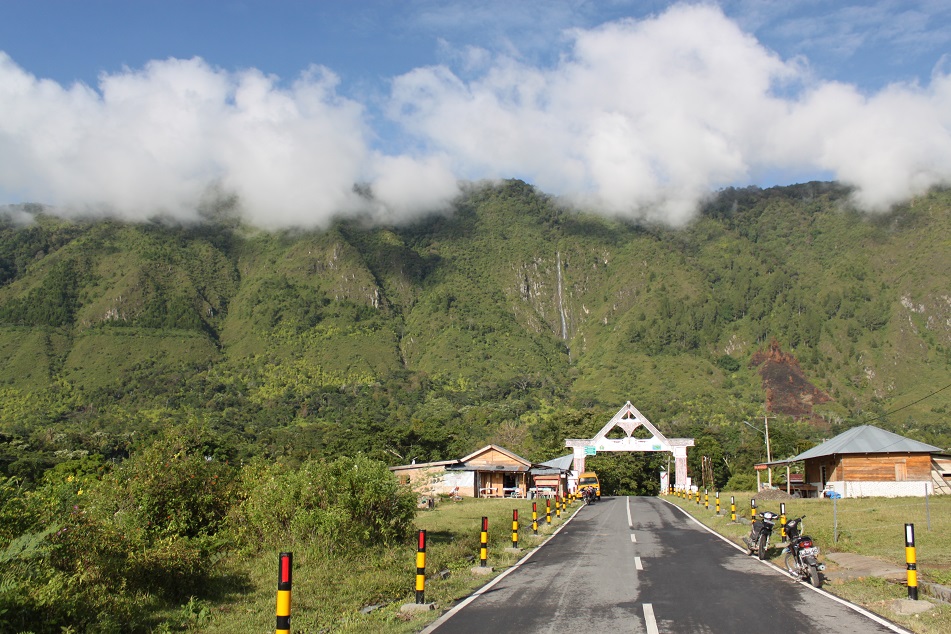
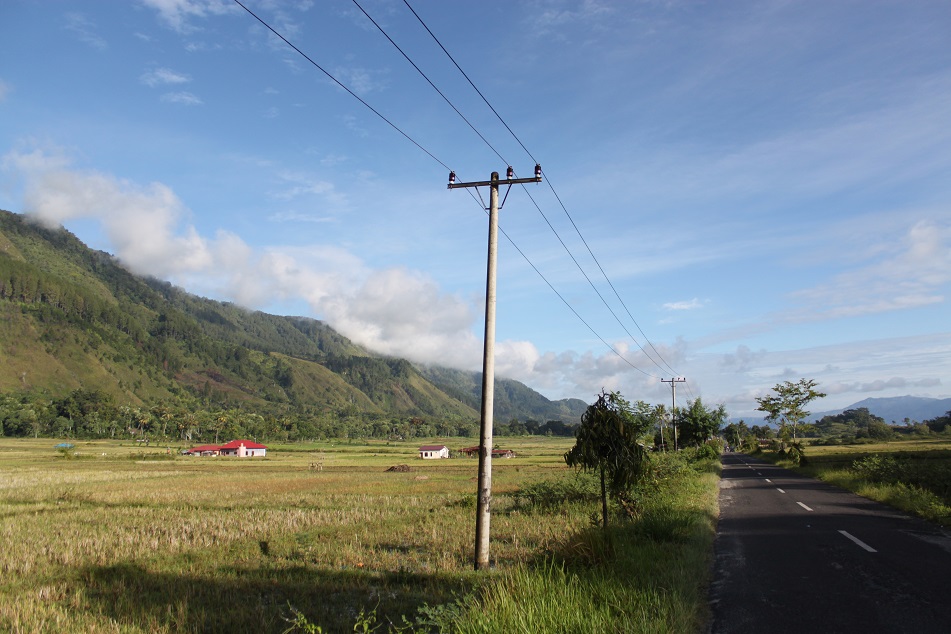
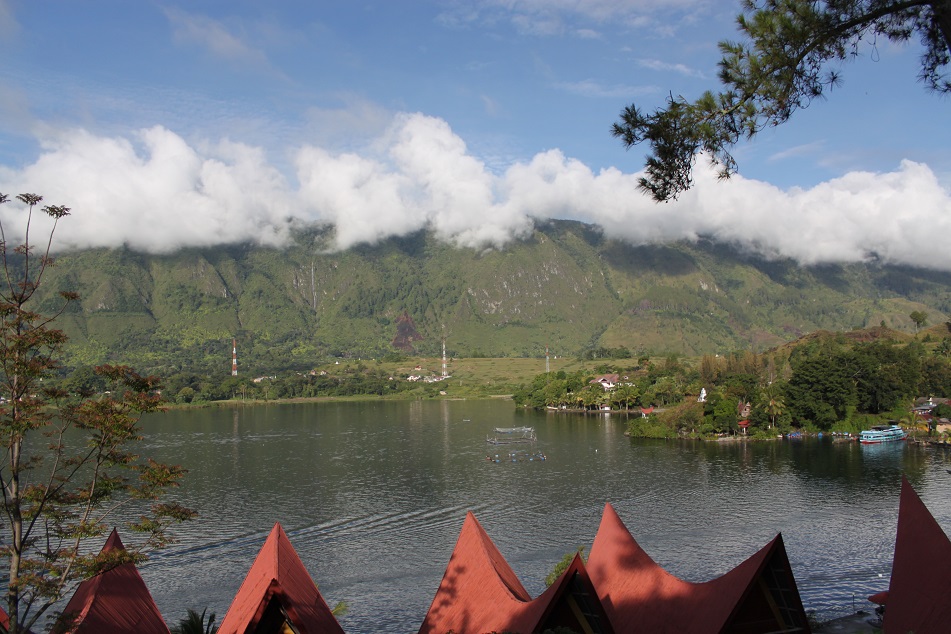
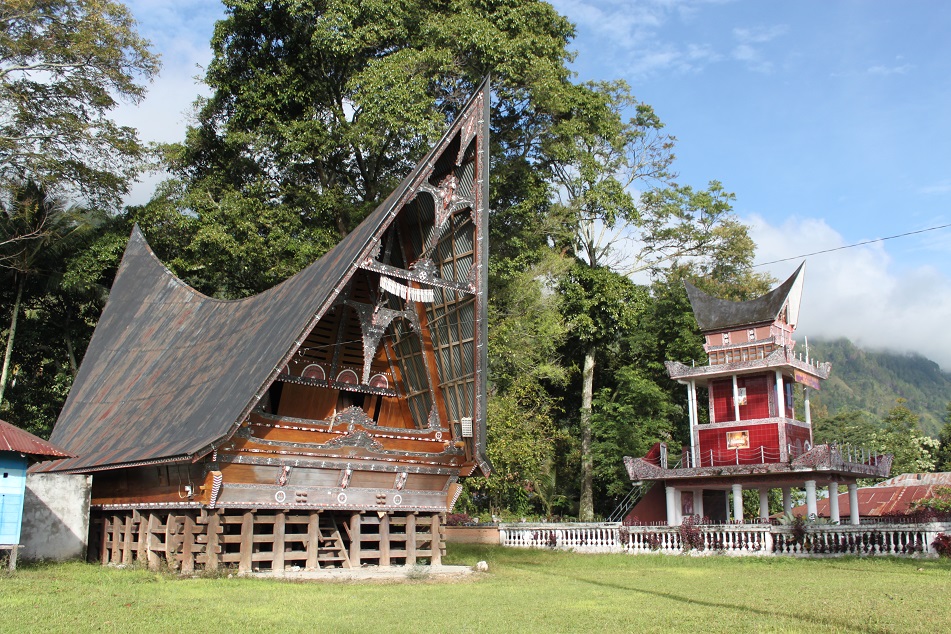
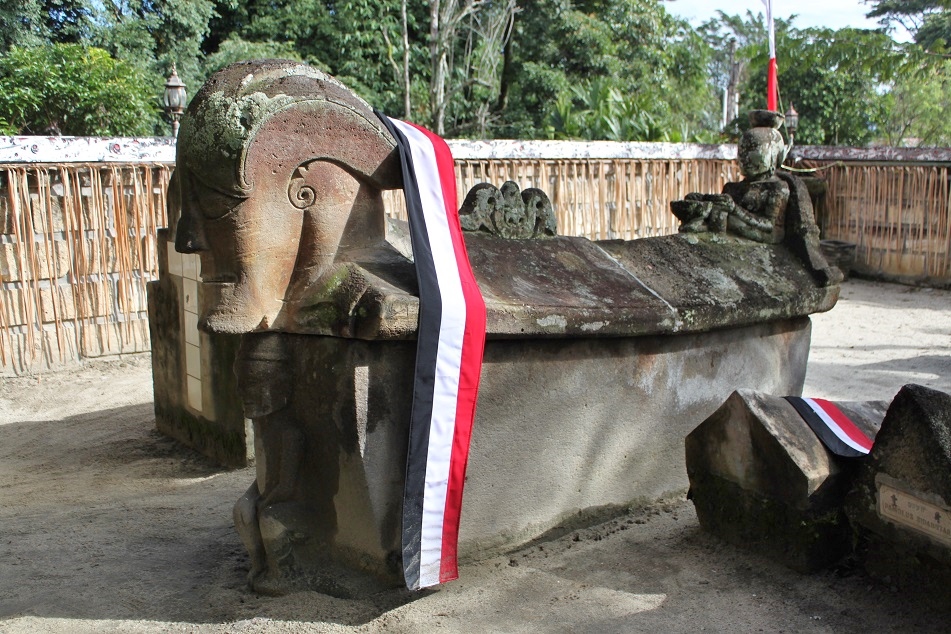
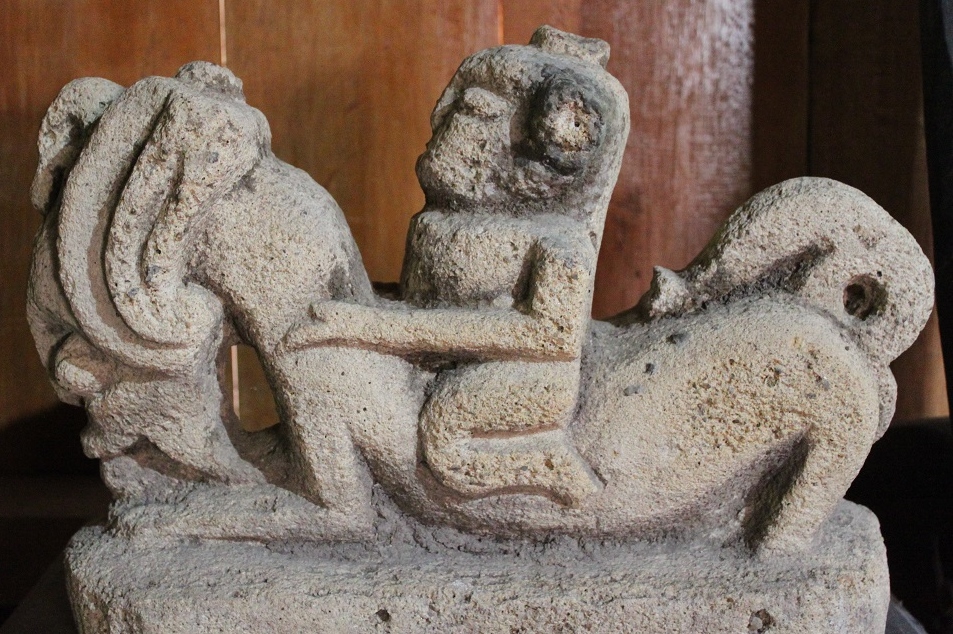
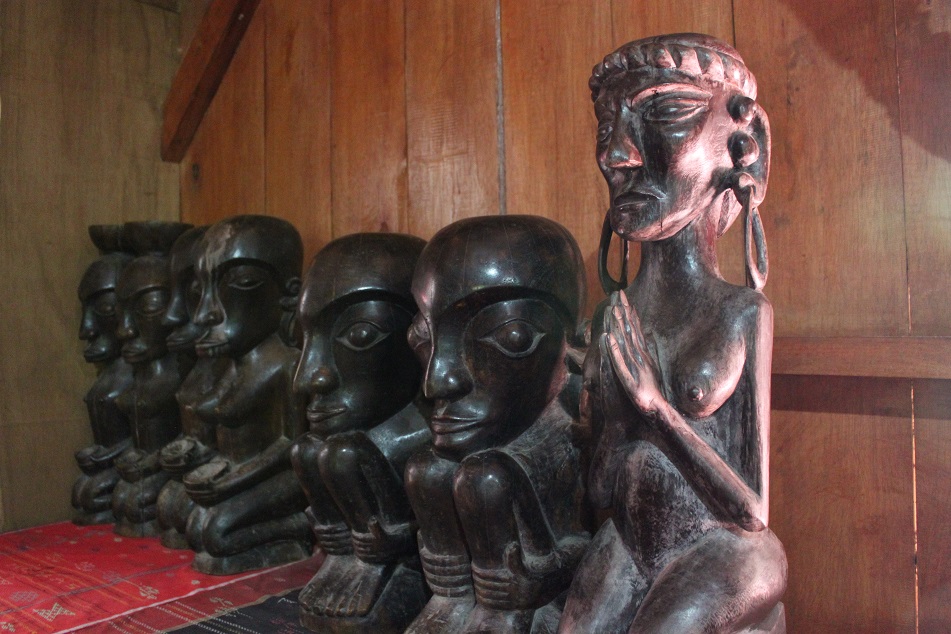
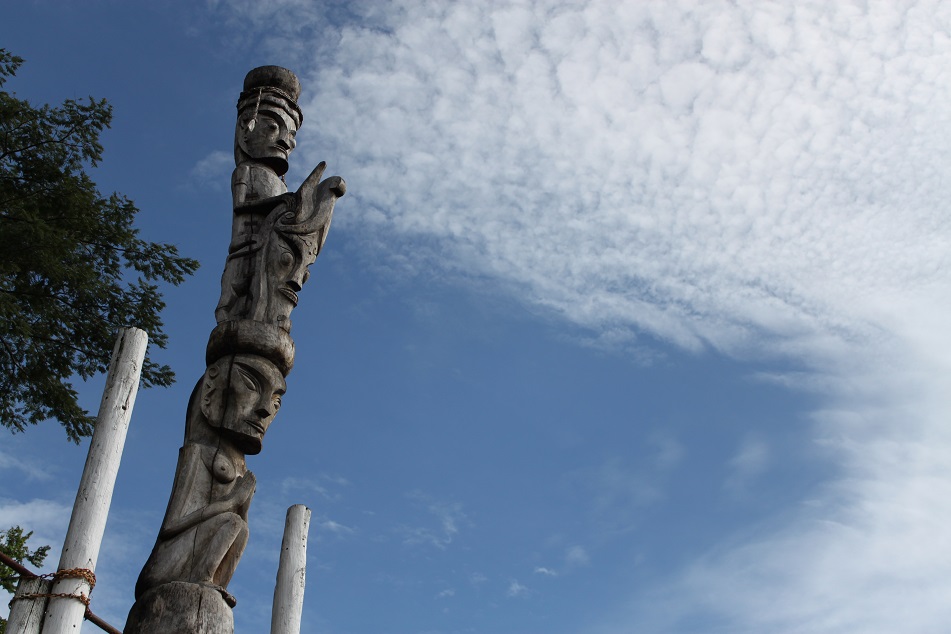


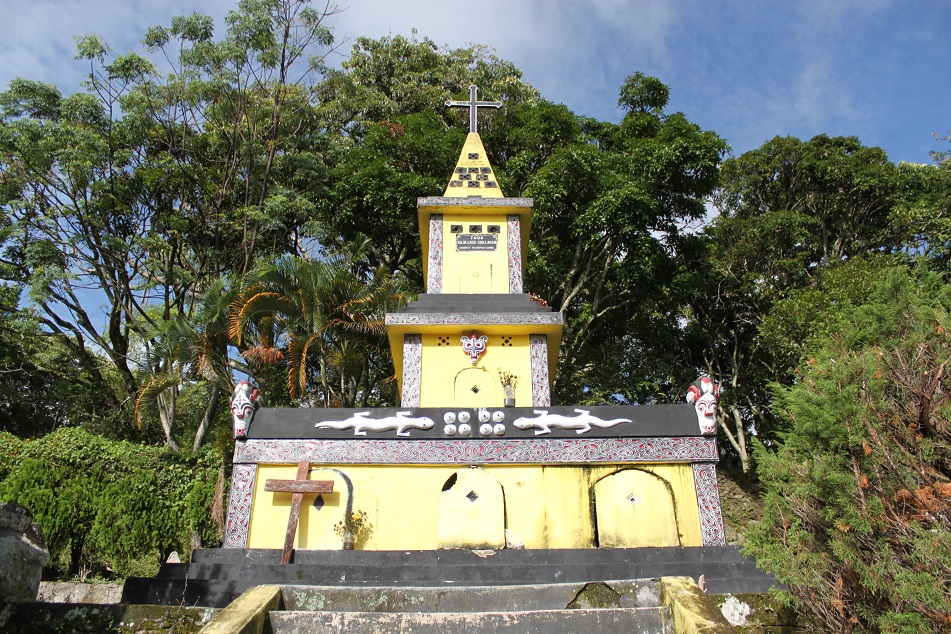
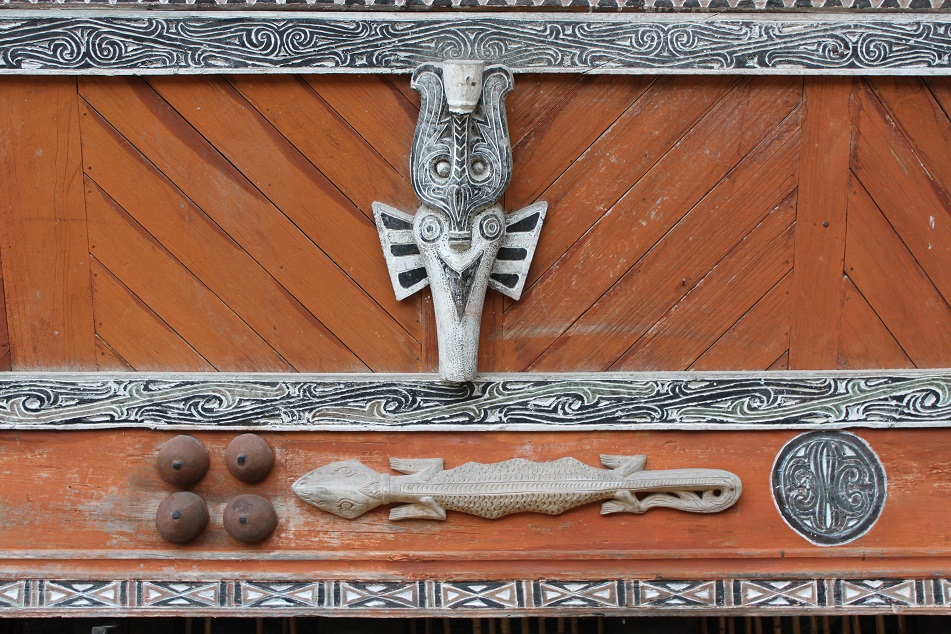
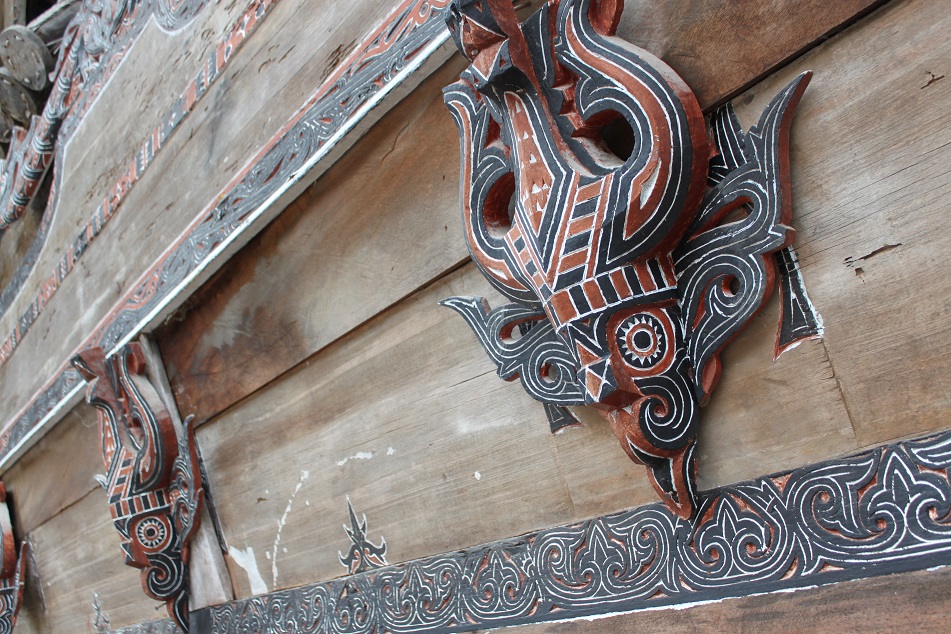
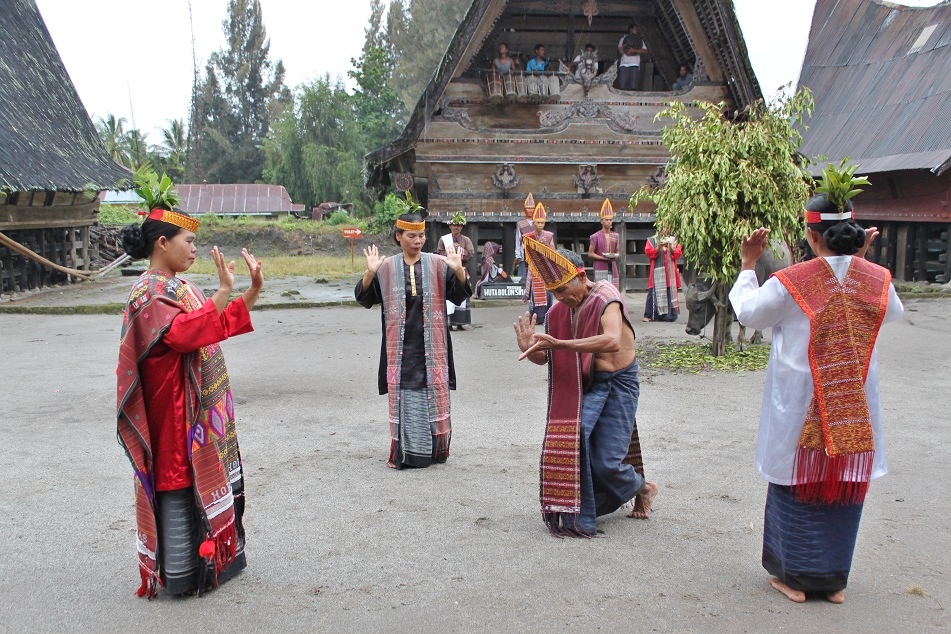
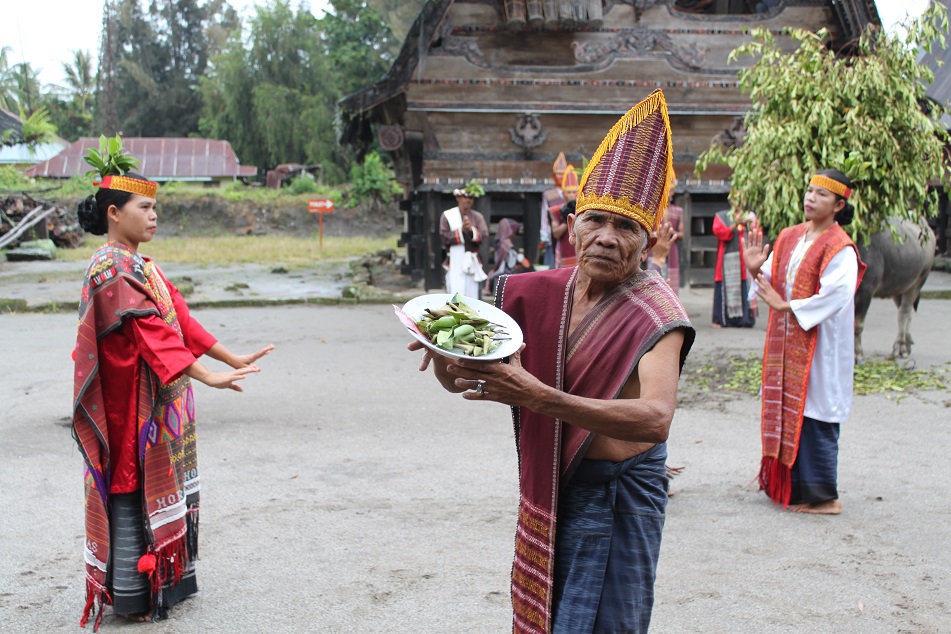
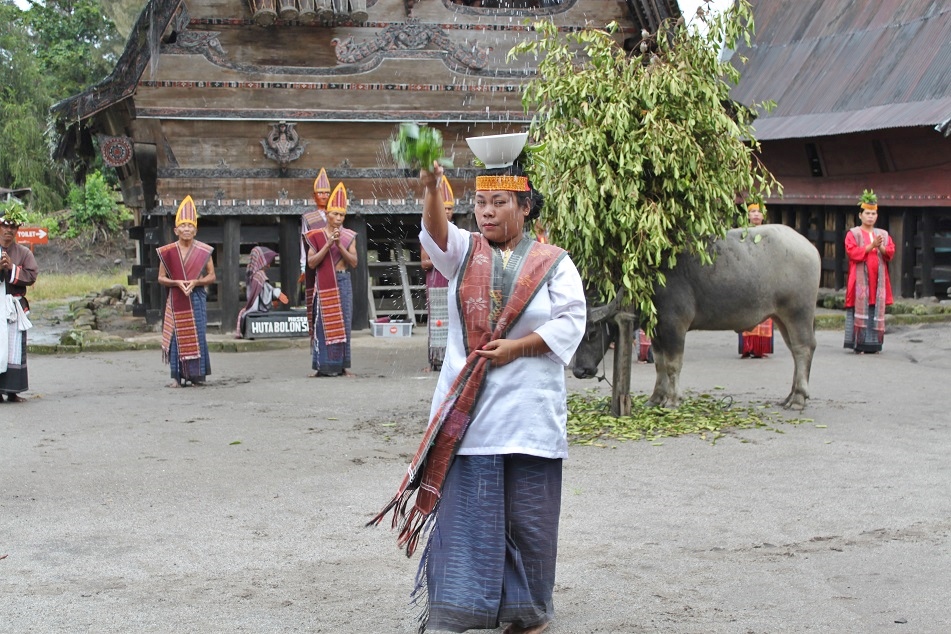
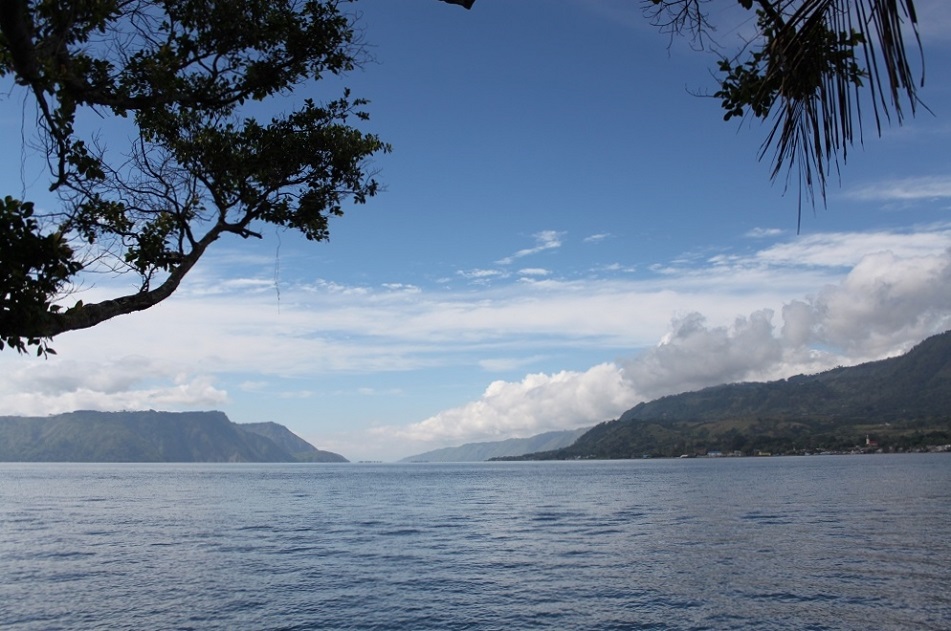

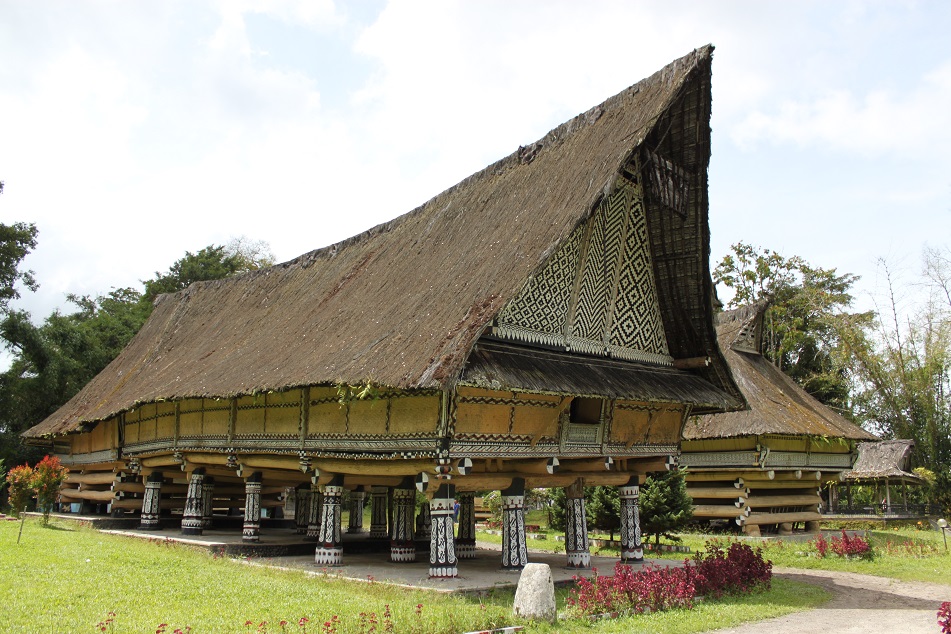
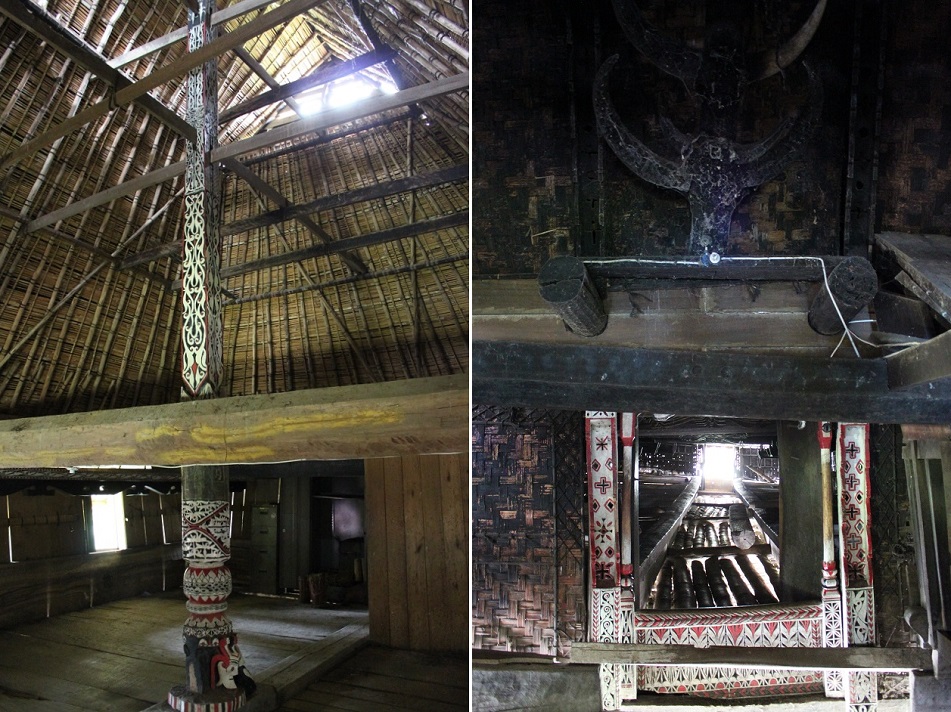

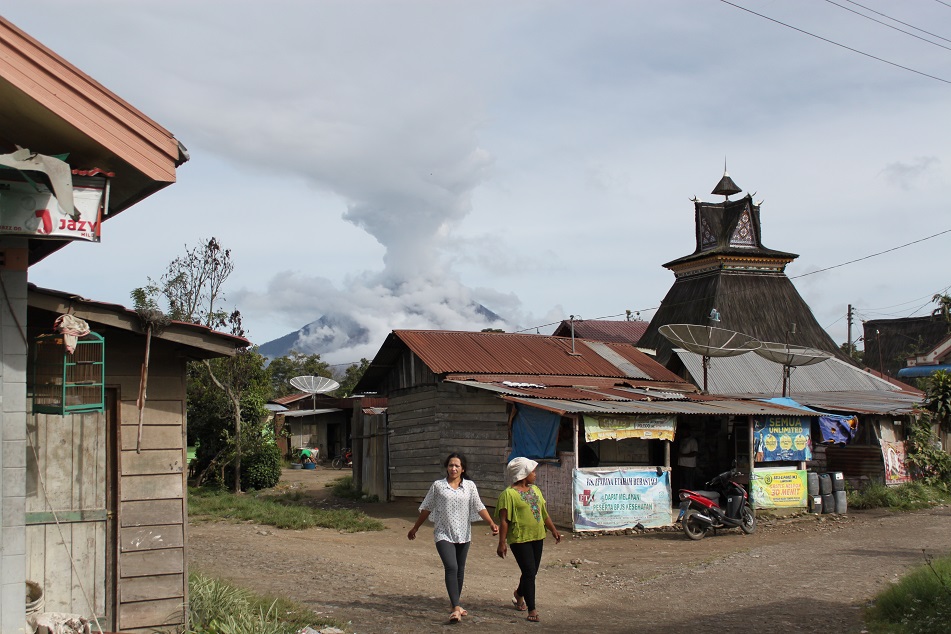
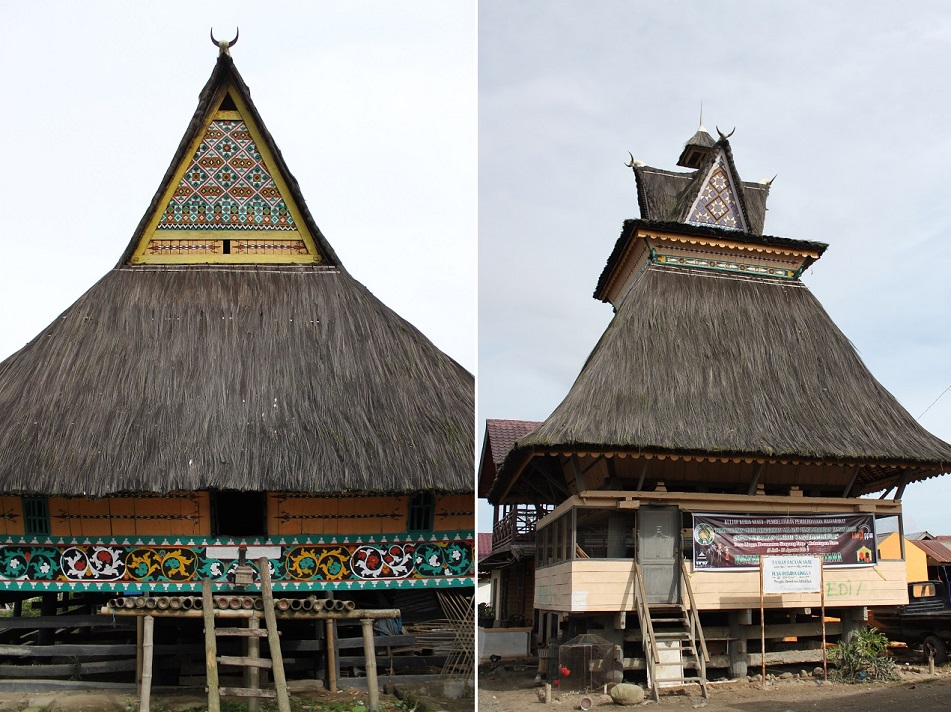
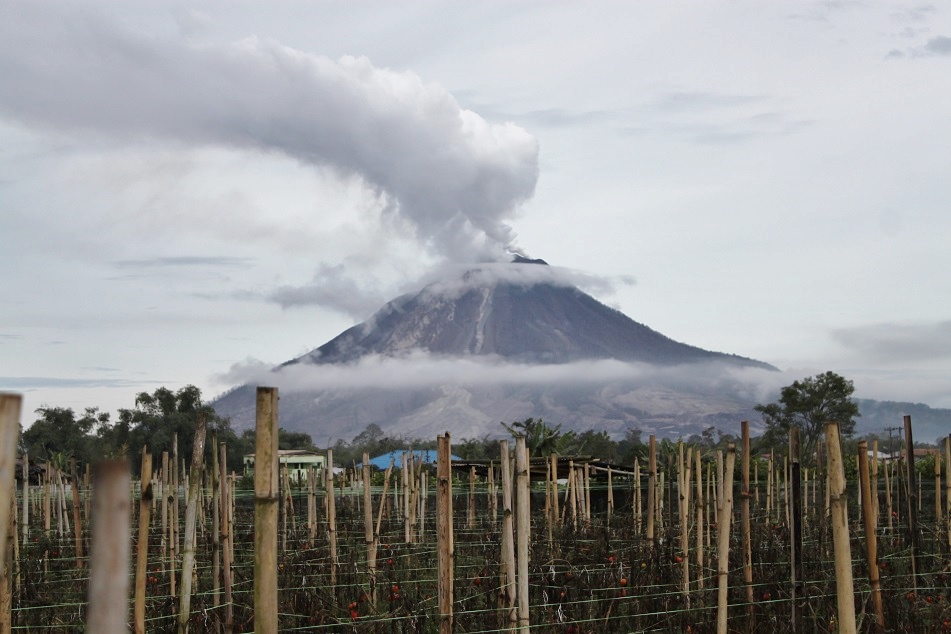
Fascinating!!!
LikeLike
This part of North Sumatra really is a fascinating place to explore — beautiful lake and waterfall, verdant island, traditional houses, and unique culture, all in one region. Thanks for dropping by, Stacy!
LikeLiked by 1 person
A unique part of the world. Loved your article.
LikeLike
Thanks Mallee. Even for me, this part of Indonesia is very fascinating.
LikeLiked by 1 person
Took my daughter to the big island years ago which is why I find it extra interesting to read your perspective
LikeLike
Was Sumatra not touristy at all when you went with your daughter? Three years after my first visit to Lake Toba many things remain the same, but there are also unpleasant changes. Jet skis now roar at certain times of the day, breaking the serenity which was once the norm at the lake.
LikeLiked by 1 person
We visited about 25 years ago. There was no other tourists around the Lake Toba area though a few when we went to Bukit Lawang. Everyone was so friendly. I think they were curious about mother and daughter travelling together.
LikeLike
Wow, you went when Suharto was still in power! I think in general Indonesians are very curious about foreigners who visit their villages/towns, although in places like Bali and Lombok the locals have been accustomed to seeing foreigners around them.
LikeLiked by 1 person
Another fascinating post!
LikeLike
Thanks John and Susan. It’s amazing to think that until a few centuries ago, very few outsiders dared to enter the Batak hinterland.
LikeLike
All of the wood details are exquisite. As I read and perused the photos, I realized the wood was attracting most of my attention! That moody volcano shot is pretty great also.
LikeLike
I also love ornate wood carvings, and intricate relief panels, and sculptures. They always make me think of the highly-skilled sculptors who created those pieces of art many many years ago. That’s why I still want to go back to India to see more of its great ancient monuments, despite being the least enjoyable place to visit during our six-month trip.
LikeLiked by 1 person
Here again your latest post gave me great insight into the history of a far away and exotic country. I hope I am not offending anybody with me saying that perhaps the divine substitute for cannibalism was the partaking in the Eucharist. Whatever the opinion it was a change for the better.
LikeLike
Thanks Peter. I think you’ll find the post after this one (which will be the final post in Chapter 4) quite intriguing as well since it is about a community whose lives revolve around death. That’s quite an interesting point about the Eucharist. There are of course many ways to perceive certain aspects of a religion, and exchanging views is a way for us to get a better understanding of it.
LikeLiked by 1 person
beautiful views and buildings
LikeLike
I know, right? However now more and more houses have corrugated iron roofs as opposed to the more traditional ijuk (fibrous part obtained from certain palm trees). But at least they all still have Gorga sculptures mounted on the facades.
LikeLike
I visited Samosir 10 years ago.
LikeLike
Being so close to where you live (relatively speaking), I guess for you it wasn’t that hard to visit Samosir. Lucky you! 🙂
LikeLike
Iya. Medan banda aceh dekat bNget. Tapi rutinitas membuatnya terasa jauh
LikeLike
Jarak memang sangat relatif, yang dekat bisa terasa jauh, dan yang jauh malah bisa terasa lebih dekat.
LikeLike
Selamat datang di Sumatera Utara mas Bama, kebetulan saya tinggal di Medan, Sumatera Utara juga banyak sekali budaya terutama di kampung saya yaitu di Selatan tepatnya di Tapanuli Selatan yang terdapat di Kabupaten Mandailing Natal, Kabupaten Tapanuli Selatan, dan Kabupaten Padang Lawas dulunya wilayah selatan ini pernah disingahi oleh Kerajaan Sriwijaya dan pedagang dari India yang melewati Selat Malaka sehingga banyak candi hindu budha di wilayah ini namun sayangnya kondisi candi yang ada di wilayah Tapanuli Selatan sangat memprihatinkan hanya ada satu saja yang masih awet yaitu Candi Bahal di Gunung Tua, sekali-sekali boleh juga dikunjungi kampung kami di Selatan mas saya jadi penasaran apa review mas terhadap kampung kami yang merupakan tanah hindu buddha yang sekarang sudah menjadi tanah dengan mayoritas Muslim, selain di Tapanuli Selatan ada juga di kepulauan Nias yang juga sarat dengan budaya yang sangat worth it untuk dikunjungi. Saya akhiri komentar saya dengan salam khas dari Sumatera Utara yaitu Horas
LikeLike
Wah kebetulan sekali saya akhir-akhir ini sedang mencari info mengenai cara menuju Candi Bahal. Kalau saya hanya punya waktu terbatas, dari Medan apakah sebaiknya sewa mobil ke Candi Bahal, atau lebih baik terbang ke Sibolga baru kemudian sewa mobil dari Sibolga ke Candi Bahal, atau ada alternatif lainnya ya? Cuma saya belum tahu sih kapan akan ke Sumatra Utara lagi. Maklum, saking banyaknya tempat menarik di Indonesia jadi bingung mau berkunjung ke mana dulu. Horas juga Bang Ferdi!
LikeLike
I really enjoyed the trip from Silangit Airport to Parapat. Pemandangannya seperti di fotomu itu, mas. Lahan hijau yang menghampar dengan latar pegunungan. Gereja-gereja mungil namun apik yang berdiri tenang di sudut persawahan. Wah.. something i can’t see in Java 🙂
LikeLike
Ke sana pas bulan apa Nug? Saya belum pernah terbang ke Silangit sih. Tapi saya suka banget dengan pemandangan sepanjang Medan – Parapat, terutama lansekap budayanya yang tercermin dari perubahan rumah tradisional setempat dari satu daerah ke daerah yang lain.
LikeLike
Agustus, mas. Waktu itu pas dapet job buat karnaval kemerdekaan di Toba makanya bisa ke sana, hahaha.
LikeLike
Wah ke Toba pas ada karnaval, kebayang serunya.
LikeLiked by 1 person
Pingback: Toraja: Where Life Revolves around Death | What an Amazing World!
Bams, this is just a glimpse of Batak’s (his)story *jeng jeng jeengg… sambil pasang musik horror sbg backsound* 😱😂 I personally always amazed every time some elderly or older generations told the story of our ancient generation. It’s mystical, magical, and intriguing.
LikeLike
Tanah leluhur kau memang luar biasa, Inang! Banyak kali yang bisa dijelajahi. Semoga gak ada yang menghantui sih tapinya. 🙂
LikeLike
Very nice
LikeLike
Thanks! This is probably among the most fascinating places in Sumatra.
LikeLike
Samosir was hands down my favorite part of Sumatra… each historic village had its own charm, the bucolic scenery immediately put me at ease, and I was delightfully surprised by the food (especially the fabulous lake fish cooked with highland spices). Intriguingly, it was the only place in Indonesia where we didn’t spot a single mosque. Those majestic totem poles and wooden carvings in Tomok’s Batak Museum made me think of the First Nations on the west coast of Canada. And to observe the differences in architecture (as well as traditions) between the Toba, Simalungun, and Karo Batak was really neat – it is mind-blowing to see that kind of cultural diversity in a relatively small area.
LikeLike
I loved the island on my first visit back in 2012, and I was glad it still retained its charm when I returned three years later — although I was a bit put-off by the jet skis on the lake. Actually you’re right, I don’t remember seeing any mosque at all on the island. Even in places like Flores and Bali mosques can be seen among the abundance of churches and Hindu temples, respectively. Although it is worth noting that both islands are much larger than Samosir. It really is mind-blowing to see totem poles, trial stones, and different architectural styles, as well as to hear different languages spoken in just one part of North Sumatra.
LikeLike
Pingback: A Waterworld Called Inle | What an Amazing World!
Pingback: The Custodian of Champa’s Treasures | What an Amazing World!
Hi, Mas Harinda Bama. Sy Dyna Rochmyaningsih, jurnalis independen yg saat ini baru saja mengembangkan publikasi Medium, The Malay Archipelago. Untuk konten awal, saya ingin menerbitkan artikel saya mengenai “Andaliman: The Hidden Spice of North Sumatra,”. Saya sangat suka dengan artikel ini dan juga foto-fotonya. Bolehkah The Malay Archipelago memakai satu-dua fotonya? Terima kasih!
LikeLiked by 1 person
Halo Mbak Dyna. Silakan mbak, saya senang kalau bisa ikut mendukung rekan-rekan jurnalis sains. Untuk fotonya silakan nanti dicantumkan kreditnya ya. Terima kasih.
LikeLike
Terima kasih banyak atas izinnya, Mas. Tentu saja, saya akan mencantumkan kreditnya. Sukses terus mas! Blog nya bagus bangeet 🙂
LikeLiked by 1 person
Terima kasih, Mbak. Sukses juga untuk artikel-artikelnya.
LikeLike
Your article on so-called Batak cannibalism is ahistorical and pure hoax! All the Western foreigners that you mentioned NEVER really saw any act of cannibalism done by the Batak; all just hearsay. If you understand the kinship system of the Batak called Marga and Dalihan Natolu then you won’t recycle colonial and the German missionary bullshit about us Batak. Do your homeworl and read academic writings on Batak culture instead of recycling orientalist craps!
-Saut Situmorang
LikeLike
I am open to corrections, especially regarding to inaccuracies on historical accounts. However, you would contribute better to the re-learning of the history of the Batak people if you also mention reputable sources so I can revise this post accordingly.
Case in point: https://notesplusultra.com/2018/06/24/on-the-cusp-of-change-semarangs-old-town/
Look at the comment from Pak Tjahjono Rahardjo (who is an authoritative figure for the history of Semarang) and how he corrected that post written by my best friend. That is a better way to help others learn.
LikeLiked by 1 person
If you are really serious about writing, it IS your responsibility as a writer to make sure first that your data are historically true before you publish it, instead of expecting your readers to correct you! Especially writing about history. Here I will help you with one link to check but the rest you must google yourself, if you are not lazy: The Origins of the Myth of Batak Cannibalism https://sites.google.com/site/batakcannibalismfactorfiction/
LikeLike
It is because I am fully responsible of what I write, I try to do my research beforehand. However, of all articles out there about a specific topic that I found and used as my sources, there might be only 1% that is 100% accurate, and that is where readers like you (who from your standpoint seems to be in that group of people who happen to know the 1%) help me and others to understand that there is another side of the story that is less known but probably closer to the truth.
All I get from you, instead, is a barrage of patronizing and condescending statements which unfortunately will not help your cause.
I will take a look at the source you share with me and dig in deeper on this subject and do necessary revisions in the post.
LikeLiked by 1 person
You call my people the Batak CANNIBAL and yet you acuse me of being patronizing and making condescending statements because I protested and proved you wrong! What a truly responsible shithead! Ok, I will make this piece of crap writing of yours well known all over Indonesia
LikeLike
Again, you’re missing the point here. I am not calling Batak people cannibals. Instead, I wrote about how Batak people were reported according to European accounts (which some were actually based on narratives conveyed by the Batak people themselves), as well as other more contemporary sources, including:
– A journal written by Professor Leonard Andaya from the University of Hawaii at Manoa: https://brill.com/view/journals/bki/158/3/article-p367_1.xml
– The explanation from a local tour guide to the Indonesian president during his visit to Samosir: https://sumut.idntimes.com/news/sumut/prayugo-utomo-1/jokowi-sampai-melongo-dengar-cerita-batak-makan-orang/5
Nevertheless, as far as I’m concerned, I do not see the point of continuing this discussion further if you are so insistent on making ad hominem attacks.
LikeLike
I just want to add that there are more civil ways to create discussion and suggest corrections or alternative points of view than using foul language, attacking fellow writers and accusing them of laziness. That is all.
LikeLiked by 1 person